
New Zealand’s Magazine for Human Resources Professionals Winter 2023
Human Resources





Are you a diversity, equity and inclusion professional? Be recognised for your knowledge, skills and experience Connect with a community of inclusion professionals Join New Zealand’s first Workplace Inclusion Professional Accreditation programme FIND OUT MORE AT diversityworksnz.org.nz/accreditation
The Human Resources magazine’s theme for this issue is Diversity: let’s make more progress. Many of us have witnessed line managers not recruiting perfectly qualified individuals because of their ethnicity, names, accents, skin colour, sexual orientation and lack of local experience, to name a few. These perfectly qualified candidates who are being unfairly discriminated against should be given the same opportunity as everyone else.
Research shows that, despite Aotearoa New Zealand having very strong employment data in quarter 4 2022, Māori unemployment remains high (6.9 per cent) compared with New Zealand Europeans (2.6 per cent). While many factors are likely to explain this, it could indicate not having a safe workplace and culturally appropriate policies and practices in the workplace. Let’s work harder to create a more inclusive future of work.
Pockets of success are emerging. With the transformation of HR practice in Aotearoa, we are starting to see workplaces that enhance the quality of life and wellbeing for all people. Humanising our work environment, whether that’s for Māori or non-Māori, has to be a good thing.
This issue has a case study on Education Perfect, which introduced a programme of helping non-nativespeaking members of the team. It has been celebrated at HRNZ’s recent HR
From the editor
Awards, taking out the Diversity Award. We also interviewed Simon Fanshawe OBE about his take on diversity. Professor Jarrod Haar shares his recent paper on perceived discrimination of Māori and Pacific employees. And Sarah Baddeley from MartinJenkins takes a closer look at trust and disinformation in the workplace. Now, more than ever, is a time to celebrate our people. He tangata, he tangata, he tangata! And if you want to find out even more on the topic of diversity and share ideas with your fellow HR professionals, join our next HRNZ Virtual Summit on 20 July 2023: Diversity, Equity and Inclusion – Where to from here?
MANAGING EDITOR
Kathy Catton

Ph: 021 0650 959
Email: kathy.catton@hrnz.org.nz
MANAGER PROFESSIONAL STANDARDS & DEVELOPMENT

Amy Clarke
Ph: (04) 499 2966
Email: amy.clarke@hrnz.org.nz
ADVERTISING & SPONSORSHIP
Nikita Barends
Ph: (04) 802 3954
Email: nikita.barends@hrnz.org.nz
DESIGN
Jen McBride, Jn Creative
Email: jen@jn-creative.co.nz
PROOFREADER
Jenny Heine
Email: jenny@heine.co.nz
SUBSCRIPTION ENQUIRIES
Email: comms@hrnz.org.nz
PUBLISHER
Human Resources is published quarterly by Human Resources New Zealand PO Box 11-450, Wellington
Kathy Catton Managing Editor
Kathy.Catton@hrnz.org.nz
Ph: 0800 247 469
comms@hrnz.org.nz
hrnz.org.nz
nz.linkedin.com/company/hrnz
instagram.com/hrnzphotos
The views expressed in Human Resources are not necessarily those of Human Resources New Zealand, nor does the advertisement of any product or service in this magazine imply endorsement of it by Human Resources New Zealand.
Copyright © Human Resources New Zealand Inc.
Vol 28 No: 2
ISSN 1173-7522
WINTER 2023 | HUMAN RESOURCES 1
Transforming HRM in Aotearoa
Develop cul turally responsive and equitable HRM practice to improve the employee experience for Māori in the workplace.

Nā tō rourou, nā taku rourou, Ka ora ai te iwi. With your basket of knowledge, and my basket of knowledge, the people shall prosper.
3 day wānanga in Wellington 18-20 October
Wharewaka Function Centre
Earlybird Rates available now – save $$$
This wānanga aims to provide HR practitioners with an oppor tunity to develop their HR practice in a way that directly and intentionally benefits Māori employees, recognising Māori as Tāngata Whenua o Aotearoa and Treaty par tners.

BOOK NOW!
FROM THE CHIEF EXECUTIVE’S DESK
Top of mind
AMY CLARKE
We’ve come a long way in the past few years in respect of diversity, equity and inclusion (DE&I) being recognised as a valid programme of work and the gains this focus has enabled. Some workplaces have made incredible strides, and yet we are still a way from DE&I being a part of ‘business as usual’ practice and processes.
We know currently that in Aotearoa New Zealand:
• disabled people, single parents and people who identified as LGBT+ or belonged to a sexual minority were among those who experienced higher rates of poor overall mental wellbeing (Stats NZ, 2022)

• people in the LGBT+ population were 2.9 times more likely than those not in the LGBT+ population to experience daily feelings of depression (Stats NZ, 2022)
• Māori and Pacific households had lower median household disposable income and experience greater material hardship (Stats NZ, 2022)

• our disabled community experiences significantly lower rates of employment than nondisabled people, and those in paid work have a lower average weekly income when compared with non-disabled people. They also report lower feelings of job safety (Stats NZ, 2022).

While many of these statistics demonstrate an improvement over the past decade (and outcomes for these groups are perhaps better than they were), they present the case that a significant amount of work is still to be done to make workplaces, access to employment and pay for work equally accessible and equitable across all diverse population groups. What we have seen with the various efforts to improve outcomes for historically disadvantaged groups in the workplace is that much of the ‘low-hanging fruit’ has now been picked, and, following this, a good deal of progress has somewhat stabilised or stagnated. The remaining change needs to be systemic and target the longterm contributors to disadvantage and inequality. This is not the low-hanging fruit but rather the crops that need planting and careful tending for years before they will start to bear fruit.
This is where HR plays a vital role and will continue to play a vital role. We have the direct line to the board, executive teams and senior leaders, CEOs and managing directors. With a trusted relationship, we can influence their decisions and lay the groundwork for real and sustainable change.
Key decision-makers love results. They provide a justification for action and a rationale for further change.
What we need now are decisionmakers who are prepared to play the longer game, who are prepared to disrupt norms and deconstruct some of the practices that continue to exclude. If they aren’t already aware, this is HR’s opportunity to create longer-term plans and strategies for deep inclusion and commitment to diversity and to ensure the right decision-makers have this information in their hands so they can start to put these into play. Where the buy-in isn’t strong, create it. Many workplaces are doing this well, and those that aren’t will be left behind in a big way as these crops start to mature in the next two to five years. This next piece of change isn’t going to be easy, if it were, we’d already be doing it. It is, however, the right thing to do. And it is possible, with a bit of trust, a lot of commitment and the resilience and perseverance that these groups have demonstrated for a very, very long time just in order to continue to exist.
Amy Clarke HRNZ Manager Professional Standards and Development Amy.Clarke@hrnz.org.nz

of knowledge WINTER 2023 | HUMAN RESOURCES 3 GOVERNS
Amy Clarke, HRNZ Manager Professional Standards and Development, is the guest writer for HRNZ CEO Nick McKissack’s column in this issue.
Domains
In this issue
Features
24 The power of difference – Simon Fanshawe OBE asks whether diversity is in crisis and, if so, what are the solutions
28 Aotearoa’s diversity: Thriving or on life support? – Dean’s Chair and Professor Jarrod Haar asks how well New Zealand employers are doing with advancing DEI in the workplace


32 Trust, misinformation and your organisation – Sarah Baddeley from management consultancy MartinJenkins, asks what HR professionals can be doing to address distrust and disinformation in their organisations

36 Case study: Education Perfect –Recipients of the HRNZ Diversity Award explain their path to success
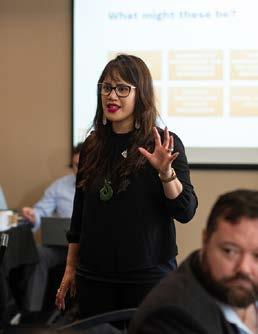
24 20 14 28 4 HUMAN RESOURCES | WINTER 2023
Shaping the Profession
1 From the Editor Kathy Catton
3 Top of mind
HRNZ Manager Professional Standards and Development Amy Clarke is the guest writer for HRNZ CEO Nick McKissack’s column this issue
8 Quick Reads
The latest updates to keep you current in the world of HR
10 Books and Podcasts
HRNZ Member Aaron Smith reviews the latest book and podcasts to inform and inspire
12 Member Spotlight
HRNZ caught up with Barbara Daxenberger, to share her career highlights and insights
14 Employment Law Update
Pay secrecy in Aotearoa – Sianatu Lotoaso, Dundas Street Employment Lawyers, examines global pay transparency changes and the impact on New Zealand
16 Sustainability
Moving beyond diversity with purpose – Rob Perry from the Sustainable Business Council looks at creating a culture of belonging for all
18 Immigration Law Update
How to fill critical staff shortages – Shi Sheng (Shoosh) Cai and Vienna Tse, from Cavell Leitch Lawyers, provide tips to help employers use the NZ immigration system to fill critical staff shortages
20 Professional Development Spotlight
HRNZ plots the latest success of the Transforming HRM in Aotearoa programme, now in its third year
22 HRNZ’s updated Professional Accreditation process is now live
We find out more about what’s changed and why
40 Dear Human Resources…
Mike Davy, MAS, shares his heart-warming insights into being a people leader
HRNZ Capability Framework
Governs
Shapes
Leads Designs
Advises
Delivers
You will notice that some of our banners and footers have changed in this edition of the magazine.
Our articles will now be tagged with the levels (see left), and Domains of Knowledge (see the end of each feature article), from our new Capability Framework, The Path
For more information, check out our website
WINTER 2023 | HUMAN RESOURCES 5
Get a head start on your career become a STUDENT MEMBER

HRNZ is committed to helping shape the future of the HR profession through our student membership offering.
Student members gain access to studentfocused events and webinars, the HRNZ Mentoring Programme and more at just 10 per cent of the regular price!

REGISTER Visit hrnz.org.nz/membership for more information

8 Quick Reads 10 Book and Podcast Review 12 Member Spotlight 14 Employment Law Update 16 Sustainability Shaping
the profession
Salaries at all-time high
Kiwis’ salaries continued to rise in the first quarter of 2023. The average salary in New Zealand has set another record, and now sits at $68,316. While job vacancies are down, as would be expected in this current economic climate, this drop has been much smaller than otherwise predicted.
Trade Me Jobs’ Sales Director Matt Tolich puts the high salaries down to the legacy of the skills shortage witnessed across the country in 2022. During this period, employers were doing all they could to attract the reduced pool of top talent, including making substantial increases to standard salaries.
While the number of applicants per listing has increased substantially from last year, up 83 per cent, some of these trends towards higher salaries have remained in the market.
Application for a proposed Fair Pay Agreement approved
The Chief Executive of the Ministry of Business, Innovation and Employment (MBIE) approved an application to initiate bargaining for a proposed Fair Pay Agreement (FPA) on 27 March 2023 by the bus transport industry.
This is the first FPA application approved for bargaining since the law came into force on 1 December 2022.
The application covers bus and coach drivers as well as cleaners working in the interurban, rural and urban bus transport industry. The initiating union is First Union Incorporated.
In MBIE’s Fair Pay Agreements Dashboard you will find all FPA applications received by MBIE. It has information about the proposed coverage, the name of the initiating
Step forward together
HRNZ has recently updated its Professional Accreditation process to align with The Path , the new capability framework for HR professionals in Aotearoa New Zealand.
The new assessment criteria for HRNZ’s Emerging Professional and Chartered Members ensure that HRNZ’s Accredited Members are on the path towards shaping the future of organisations through their people.
If you’re wondering whether you are ready for Professional Accreditation, try HRNZ’s new self-assessment tool to see where you’re at against the Core Capabilities and Domains of Knowledge, two elements of The Path Capability Framework.
The Continued Professional Development (CPD) system has also been updated, with a new CPD Activities table outlining the wide range of CPD-earning opportunities available to meet your personal development goals.
union, the bargaining parties approved and their contact details.
The Path interactive decks cards are for sale available from HRNZ. These cards act as a tool for selfreview and upskilling on all levels of the framework.
At a great price of $25 (plus GST) for the first set and only an extra $10 (plus GST) for any further sets, grab your packs today. Shipping is just $9 for all of New Zealand.
To place your order, email comms@hrnz.org.nz
For more information, read our article on page 22.
8 HUMAN RESOURCES | WINTER 2023 QUICK
READS
Growing optimism for four-day week
According to a poll of almost 42,000 professionals by recruitment and workforce solutions specialists Hays, 40 per cent of respondents believe the four-day work week could become a reality within the next five years. A further 21 per cent think it will take up to a decade to come into effect.
However, 16 per cent believe a four-day work week could be a reality within the next 12 months. The final 23 per cent believe it will never materialise.
This follows the success of Unilever’s New Zealand four-
day work week trial, which ran from 1 December 2020 to 30 June 2022. It found work–life balance, wellbeing and feelings of strength and vigour at work all improved. Unilever has since extended the trial to Australia.
The 100-80-100 principle was developed by 4 Day Week Global and holds that employees receive 100 per cent pay for 80 per cent time and 100 per cent of productivity targets achieved. It’s the main framework used by organisations when trialling or adopting a four-day work week.
Four main variations can be used to implement this:
1. all work stops on day five and an organisation shuts down entirely for one extra day a week
2. teams or individual staff members stagger their days off
3. different departments adopt different work patterns, such as shorter days worked across all five days
4. hours are seasonally adjusted, with staff working 32 hours on average per week across the year.
Healthcare equity in the workplace
Arecent poll by Frog Recruitment highlighted the demand for menopause and menstrual policies in New Zealand, shining the spotlight on one of the ways employers could promote equity and support the genuine needs of a vital group of their workforce. While 56 per cent of poll participants thought New Zealand businesses should offer paid menstrual leave, only 5 per cent of employers actually do.
With more than 60 per cent of poll respondents admitting that menstrual pain or perimenopause symptoms significantly affected their experience at work, Frog Recruitment Managing Director Shannon Barlow believes employers should be putting it at the top of their policy priority list.
“The New Zealand workforce is made up of 830 000 women aged between 40 and 54 years and most
will be experiencing varying stages of menopausal transition that can last between two and twelve years. The poll shows women are suffering significant menstrual or perimenopause symptoms at work, and they’re doing it in silence as until recently, the issues have been taboo.
“Whether you’re working at a small start-up or are part of a large multinational, being an equitable workplace is essential in our competitive and global labour market,” she says. “More Kiwi employers must catch up with the rest of the Western world and start offering menopause policies and menstrual leave – this can look like paid leave days, options to work from home and a policy that is designed to normalise these issues and ensure people do not need to use their sick leave for their essential body functions.”
Barlow says Kiwi businesses should be doing more to meet our changing world.
“Employees today have much more on their wish list. Staying competitive means perpetually reviewing benefits and policies to ensure they fit our rapidly evolving workforce. Equity can be embedded in company policy in many forms and ensures fairness in culture and nationality, education, race, sexuality and gender and age.
“The best way to attract and retain talent is to ensure people feel recognised and valued. Leading with equitable health benefits supports your employees through the different stages of their working life, but will also improve awareness of these issues, which can have a positive impact on your whole workforce in a broader social sense.”
WINTER 2023 | HUMAN RESOURCES 9
Books and podcasts to inform and inspire
Help is at hand with timely resources for HR practitioners grappling with creating diverse and inclusive workplaces. These two books and two podcasts provide valuable guidance.
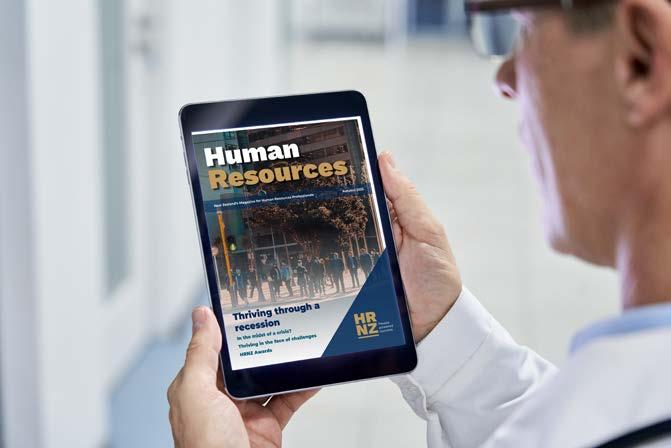
Simon Fanshawe (2021)
The Power of Difference: Where the complexities of diversity and inclusion meet practical solutions. Published by Kogan Page Ltd.
Hadyn Olsen (2022)
Preventing Workplace Bullying and Harassment. Published by Wolters Kluwer.

Preventing Workplace Bullying and Harassment by Hadyn Olsen is a comprehensive guide that offers practical strategies for preventing and addressing workplace bullying and harassment. Olsen draws on his extensive experience in workplace relations to provide clear and concise advice for both employers and employees on how to create a safe and respectful work environment.
Power of Difference is an engaging and persuasive read that challenges readers to rethink their assumptions about diversity and the role it plays in society.”
The Power of Difference by Simon Fanshawe is a thought-provoking exploration of the value of diversity in modern society. Fanshawe argues that our differences – whether they be in race, gender, sexuality or other characteristics – should not be seen as obstacles to be overcome but rather as sources of strength and vitality that can help us build more inclusive and dynamic communities.
Throughout the book, Fanshawe draws on personal anecdotes, historical examples and social research to make his case for the power of difference. He also offers practical advice for individuals and organisations looking to embrace diversity and foster greater understanding across lines of difference.
The Power of Difference is an engaging and persuasive read that challenges readers to rethink their assumptions about diversity and the role it plays in society. Whether you are a business leader, a community activist or simply someone interested in building a more inclusive world, this book offers valuable insights and inspiration.

The book covers a range of topics, including defining bullying and harassment, understanding the legal and ethical obligations of employers and employees, and developing effective policies and procedures to prevent and address incidents of bullying and harassment. Olsen also provides tips on how to handle complaints and investigations, as well as strategies for promoting a positive workplace culture.
One of the strengths of this book is its emphasis on prevention. Olsen stresses the importance of creating a workplace culture that values respect, dignity and inclusivity, and provides practical steps for achieving this goal. He also offers guidance on how to recognise the warning signs of bullying and harassment and intervene early to prevent escalation.
Preventing Workplace Bullying and Harassment is an essential resource for anyone looking to create a safe and healthy work environment. Olsen’s practical advice, real-life examples and easy-to-read style make this book a valuable tool for employers, employees and HR professionals alike.
10 HUMAN RESOURCES | WINTER 2023 BOOK AND PODCAST REVIEW AARON SMITH ADVISES
“ The
Podcast:
Punk Rock HR
Punk Rock HR is a podcast hosted by HR leader, author and speaker Laurie Ruettimann. Each episode features conversations with experts and thought-leaders on a variety of topics related to the future of work, leadership and HR. The show provides a refreshingly honest take on common challenges for HR and business leaders.
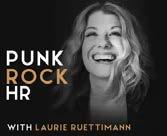
Read back issues of Human Resources

online at:
hrnz.org.nz/hrmagazine
Podcast: HR Chats with Te Radar
HR Chats with Te Radar is an HRNZ-produced podcast that explores the human resources landscape in a humorous and engaging way. Hosted by comedian Te Radar, the show features interviews with HR professionals, business leaders and experts in various fields. The conversations are lively and entertaining, with a focus on the personal and human side of HR. This podcast is available on Spotify, Apple Podcasts and YouTube.
“ The conversations [in the HR Chats podcast with Te Radar] are lively and entertaining, with a focus on the personal and human side of HR.”
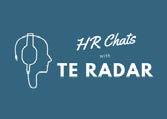
Aaron Smith (EPMHRNZ,

worked as People and Culture Manager for Scenic Hotel Group up until April 2023, where he was heavily involved in supporting managers with recruitment and employment relations advice. He recently accepted the role of Hotel Manager of Scenic Matavai Resort in Niue, where he now lives with his fiancé.
Domains of knowledge
 MBA)
MBA)
WINTER 2023 | HUMAN RESOURCES 11
HRNZ member profile

Human Resources magazine caught up with Barbara Daxenberger, People and Capability Manager at engineering consultancy Tonkin and Taylor. We asked her about her career, her path to HRNZ Chartered accreditation and her thoughts about the role of HR in Aotearoa today.
What have been your career highlights to date?
My career hasn’t been very linear. After graduating from high school in Germany, I decided to study maths as I enjoyed logical thinking and the clarity of the subject. An answer was either right or wrong, there was no grey. During an internship in Switzerland, I discovered the world of HR and human behaviour. HR was precisely the opposite of the black-andwhite world I was used to, and it fascinated me. I therefore decided to do a post-graduate degree in HR Management. The internship in Switzerland not only sparked my interest in HR but also in travelling and living abroad. After finishing my master’s degree, I have lived and worked in Singapore, Canada, Dubai, Australia and now New Zealand. I have worked in HR generalist and specialist roles but also on horse ranches guiding trail rides and in
call centres responding to customer queries in five different languages.
I came to New Zealand four years ago, working as an HR Analyst for Tonkin and Taylor, headquartered in Auckland. After five months in the role, I accepted the role of People and Capability Manager, leading an amazing team of 25-plus HR professionals. I am also leading the Auckland chapter of Culture First, a community of professionals that wants to create a better world of work. Feel free to check out one of our next events.
What inspires and motivates you in your career and why?
Coming originally from a very analytical world, I am fascinated by human behaviour. I believe that many of our workplaces, legislation and ways of working are still based on assumptions from the industrial revolution. For example, we can measure how productive someone is by measuring how many hours they work. A lot of us now work in jobs requiring creativity and being in the right mindset to produce the best outcomes. But the human brain isn’t designed to be creative and fully productive from 8:30am to 5:30pm, especially when sitting in front of a laptop with lots of distractions like emails, IMs and phone calls.
I personally have my best ideas either in the shower or when I go for long runs, when my brain gets a chance to stop analysing and my creativity can surface. My passion is to create
a better world of work that takes into account that we are human beings with emotions, and have bodies with neurotransmitters like serotonin and adrenaline and a lot of complex unconscious thoughts and beliefs. All of these can be seen as distractors and something to be suppressed or controlled in workplaces. I see them as huge strengths of what makes us human and areas that AI won’t be able to replace us in very soon.
What do you see as the challenges facing the industry and the HR profession?
Ithink it’s an exciting time to be in HR at the moment. More and more companies realise the importance of a strong HR function to turn the challenges ahead into opportunities.
1. Keeping up with technology and digitisation: HR professionals need to stay up to date with technological advancements, such as digital HR platforms, artificial intelligence, ChatGPT and automation. Adopting these technologies can help to streamline HR processes and increase efficiency, but it will also require significant investment and change management.
2. Creating workplaces where everyone can thrive: Our world of work is changing, and I am excited to see more and more people bringing their whole selves to work. For HR professionals, this means supporting the amazingly
12 HUMAN RESOURCES | WINTER 2023 MEMBER SPOTLIGHT BARBARA DAXENBERGER SHAPES
complex humans we work with, for example, mental health and wellbeing, DEI, neurodiversity, women in menopause, men taking carer’s leave, flexible working, remote working… the list goes on.
3. Keeping up with globalisation, hybrid work and flexibility: The world is becoming smaller and smaller, and employment relationships are becoming more and more flexible, parttime, casual, contracting, the gig economy, working remotely from overseas, sabbaticals, OEs, purchased leave etc. Our legislation is typically a few steps behind. Managing all of these different ways of employment is making the world of HR more complex and exciting.
How has HRNZ Capability Framework helped your career?
Being a Chartered Member of HRNZ allows me to connect with colleagues who face similar challenges as I do and exchange or brainstorm ideas. Mentoring other HR professionals through HRNZ’s mentorship programme gives me a chance to share my knowledge and also gives me insight into other industries and HR functions.
The HRNZ Awards are a great way to showcase the amazing things we do as a company and get recognition for them, and, at the same time, get inspired by what others have achieved. The HRNZ career framework ‘The Path’ is an incredible tool to
guide my career and help with development conversations with my team and my mentees. Sometimes it also helps simply to know that I am not the only one struggling with a particular challenge and that everyone else is in the same boat.

Domains of knowledge
WINTER 2023 | HUMAN RESOURCES 13
Pay secrecy in Aotearoa
result in penalties ranging from US$125,000 to US$250,000.
Keeping it secret – for now
Across the ditch, the Australian Labour Government recently legislated the end of pay secrecy clauses in employment agreements, to reduce the gender pay gap. This means Australian employees can now freely and openly talk to each other about how much they earn, and terms and conditions of employment relevant to pay, without fear of disciplinary action being taken by their employers.
Despite these global legislative changes on pay transparency, New Zealand does not have parallel pay transparency schemes. Currently, New Zealand employers can require employees to keep their salary a secret if they have agreed to do so in their employment agreements. However, this could all be set to change. Given the global changes in pay transparency, a government committee’s recommendations for New Zealand to adopt a pay transparency regime, and increasing momentum, it could simply be a matter of when.
Mind the Gap and Human Rights Commission lead the charge
Essentially, Australia is catching up on pay transparency regimes already introduced in other countries, including certain American states, the United Kingdom and Europe. For example, in New York City, employers must disclose minimum and maximum salary ranges in job advertisements, regardless of the job. Failure to do so could
In June 2022, the government’s Education and Workforce Committee (set up to inquire into pay transparency in New Zealand) recommended that the government adopt a pay transparency regime. This would include a similar ban on pay secrecy clauses in New Zealand employment agreements and compulsory publishing of starting salaries for an advertised job, to combat the gender pay gap. This was recommended as part of the government’s range of potential measures to combat the gender pay gap and equity issues in the workplace, including the introduction of Fair Pay Agreements. The recent legislative changes in Australia (by another Labour government) could mean New Zealand will follow suit.
Momentum is growing for improved pay transparency in New Zealand. Mind the Gap launched a voluntary pay gap registry where organisations can report on their pay gaps, including gender and ethnic pay gaps for Māori and Pacific employees. Late last year, Mind the Gap also handed over 8,559 signatures calling for the government to bring in legislation requiring gender and ethnic pay gap reporting.
The Human Rights Commission launched a petition demanding a pay transparency regime to be adopted in New Zealand, which received 4,000 signatures and was accepted by the government. The Commission also conducted the Pacific Pay Gap Inquiry, to understand why the Pacific pay gap (that is, the largest pay gap in New Zealand) exists and how it can be closed. More organisations in New Zealand are reporting on their pay gaps, and pay gap reporting is a requirement in the public sector, including most recently Auckland Council, which reported Pacific workers at Auckland Council are earning 27.6 per cent less than the
Sianatu Lotoaso, Associate at Dundas Street Employment Lawyers, looks to Australia and beyond for lessons that can be applied to New Zealand’s gender pay gap.
“ Despite these global legislative changes on pay transparency, New Zealand does not [currently] have parallel pay transparency schemes.”
“ …employers would be wise to start considering how they will navigate potential (and likely uncomfortable) discussions on pay transparency and parity in their workplaces...”
14 HUMAN RESOURCES | WINTER 2023 EMPLOYMENT RELATIONS SIANATU LOTOASO SHAPES
organisation’s average, and the overall gender pay gap is 22.6 per cent.

While pay transparency has survived the Prime Minister’s, Chris Hipkins, prioritisation of Labour Government policies following Jacinda Arden’s departure, given the current climate for more transparency around pay, the timing of any legislation in this area remains uncertain.
Fair and reasonable still in the frame
Generally, pay is a matter of negotiation and agreement between employer and employee or union. As such, if an employee desires an increase in their pay, it must also be negotiated and agreed
upon by their employer. What if an employee breached their pay secrecy clause in their signed employment agreement? At law, while an employer may seek to rely on a pay secrecy clause in an employment agreement to start disciplinary proceedings, it is likely an employee will claim that they disclosed their pay to genuinely understand whether they were actually being paid in parity comparable to others in the same or similar role to them. At that point, serious questions about whether an employer may reach a view that disciplinary action is fair and reasonable in all the circumstances would arise.
However, employers would be wise to start considering how
they will navigate potential (and likely uncomfortable) discussions on pay transparency and parity in their workplaces, if Australia is anything to go by.
Lotoaso is an Associate at Dundas Street Employment Lawyers. Sianatu provides advice on all aspects of employment law and the employment relationship. Sianatu regularly provides advice to a range of clients in the public and private sectors.
Domains of knowledge
 Sianatu
Sianatu
WINTER 2023 | HUMAN RESOURCES 15
Moving beyond diversity with purpose
at
Manager
Reflecting on the past few years, it’s clear the global COVID-19 pandemic has caused a fundamental rethink of work: what it means, where it’s done and how it’s led. At the same time, social justice movements, such as #metoo, #BlackLivesMatter and #ClimateStrike, have also elevated diversity, fairness and inclusion issues.
There is no denying the benefits working-from-home and hybrid models offer, but the Great Resignation, the emergence of ‘career cushioning’, the prevalence of employees feeling isolated, and employers struggling to maintain workplace culture and equitable working experiences are testimony to the many challenges that also exist. Creating a culture of belonging

Rob Perry,
Thriving People
the Sustainable Business Council (SBC), reflects on the past few years and what it means for sustainability, diversity and creating a culture of belonging for all.
16 HUMAN RESOURCES | WINTER 2023 SUSTAINABILITY ROBERT PERRY LEADS
is more critical than ever, both for employees and for business success.

Leaders have long since recognised a diverse workforce offers a competitive edge; the business case is well documented. Yet, a gap remains between understanding the behaviours and norms that unlock this capability and actually putting it all into practice.
the hui series, we helped members develop scalable innovations to build workplace belonging, embed inclusive and transparent leadership, normalise inclusive recruitment, and support staff to bring their authentic selves to work.
Eight ways to build a sense of belonging in the workplace
Based on this work and supporting conversations, here are eight of my top tips for building a stronger sense of belonging at your workplace.
1. Create a working environment that ensures accountability for the physical and psychological safety of all.
Language we use
Part of the challenge is that terms like ‘diversity’, ‘inclusion’ and ‘belonging’ are often used interchangeably. However, they’re distinct concepts that need to be understood both about what they mean and how they interact. Here’s the breakdown.
• Diversity refers to the characteristics that make people unique.
• Inclusion refers to the behaviour and cultural norms that make one feel welcome.
• Belonging refers to a sense of acceptance, which reflects the level of inclusion an individual feels in their workplace.
SBC members called on us to help support them in moving beyond diversity to put inclusion, fairness and equity at the heart of better business in the transition of Aotearoa New Zealand to net zero carbon emissions. The concept involves shifting focus from simply increasing representation of minority groups to actually creating a supportive and inclusive environment where all employees feel welcomed, valued and respected, regardless of how they identify themselves.
As part of our Thriving People programme, we hosted a series of hui called ‘Moving beyond Diversity’ designed to support businesses to increase their social impact. Through
2. Foster connection and build community through a focus on coaching, mentorship, networking and acceptance.
3. Empower individuals from diverse backgrounds to lead and have a voice in decision-making processes and to co-create the cultures to which they belong.
4. Share responsibilities based on skills, knowledge and experiences not the job title.
5. Address and correct biases and barriers in policies, procedures and practices (eg, in recruitment).
6. Provide education and training on topics such as unconscious bias, neurodivergence, cultural competence and inclusive communication.
7. Ensure an equitable system is in place where every employee is supported personally and professionally, and their contribution to the organisation’s purpose is valued.
8. Understand the narrative and build accurate, meaningful data about your workforce.
Without inclusion, the hononga (connections) that attract diverse talent, allow for creativity, facilitate engagement and improved productivity, and ultimately deliver added value to your organisation simply won’t happen. And the more diverse your organisation becomes, the more crucial it becomes to
ensure inclusion and belonging are core tenets of your culture. Through these hui, SBC has now built a network of more than 100 people leaders and diversity and inclusion champions engaged across the New Zealand businesses sector. With a network of 130 businesses that employ nearly 190,000 fulltime equivalent employees, our members have unparalleled influence and the ability to take large-scale collective action, and we can’t wait to see what they achieve by moving beyond diversity with purpose.
Robert Perry manages the Thriving People portfolio at the Sustainable Business Council. He champions business leadership and collective action that support employee wellbeing, positively impact on communities and wider society, and put people at the heart of the transition to a zero-carbon economy. Robert has over 20 years’ experience providing strategic leadership on critical sustainability issues and their solutions in business, consultancy and public sector organisations in the United Kingdom, Australia and New Zealand.
“ The more diverse your organisation becomes, the more crucial it becomes to ensure inclusion and belonging are core tenets of your culture.”
“ Diversity and inclusion may capture your head, but belonging captures your heart.”
WINTER 2023 | HUMAN RESOURCES 17
PAT WADORS
Domains of knowledge
How to fill critical staff shortages
Shi Sheng (Shoosh) Cai and Vienna Tse, immigration lawyers at Cavell Leitch Lawyers, provide tips and information to help employers use the New Zealand immigration system to fill critical staff shortages.
The international labour market is a competitive space that some New Zealand employers successfully navigate, but not all. More employers will likely need to tap into the global labour market to fill critical staff shortages.
Accredited employer work visa
For most local roles, employers will support workers for an Accredited Employer Work Visa (AEWV). As a brief introduction to the AEWV category, an employer must have approved accreditation status and a Job Check application before they can support a worker for an AEWV. Processing times are relatively quick and average between two to four weeks. AEWV holders will be able to support their partner or spouse for a Partnership Work Visa and their children for temporary visas. Unless a worker submits a Job Change application or obtains a further visa, the worker will be tied to working for the employer. Currently, the validity of an AEWV will depend on whether an employee is paid at or above the
median wage rate (these workers will get a three-year AEWV) or if they work in a role that has a median wage rate exemption (these workers will get an AEWV with two years of validity or less).
Here are tips for employers to bear in mind when using the wider Accredited Employer system.
Job Check applications should be carefully planned. This means that:
• if an employer holds High Volume accreditation, we recommend applying for additional tokens. This covers scenarios where a worker leaves after their AEWV is approved and a new worker needs to be supported
• pay bands should have a minimum and maximum pay band that is wide enough to support any fluctuations in pay rate during a recruitment period
• roles that share the same location, job description and role title should be bundled within one Job Check application
• any requirements for roles should be genuine but wide enough to ensure that workers can demonstrate they are suitably qualified for the role.
Immigration New Zealand (INZ) will be completing checks to ensure that employers comply with accreditation requirements. This includes checking that employers are:
• ensuring workers are paid at least the rate that is set out on an AEWV for all hours worked
• providing settlement information to AEWV team members within one month of the AEWV holder commencing employment
• providing AEWV holders paid time to complete Employment New Zealand modules
• ensuring INZ is kept up to date on changes to business structure and other considerations, such as changes to key people.
The consequences for employers who are found in breach will range from requirements to improve their compliance systems and standdown periods barring employers from supporting migrant workers for visas, to fines of up to $100,000 per breach and jail time of up to seven years if it is identified that migrant workers are being exploited. We recommend completing regular audits to ensure breaches do not occur and that any breaches are disclosed and addressed properly.
18 HUMAN RESOURCES | WINTER 2023 IMMIGRATION LAW UPDATE SHI SHENG (SHOOSH) CAI AND VIENNA TSE LEADS
Working holiday visa
Workers from countries that have a Working Holiday Scheme with New Zealand and who meet the requirements under the scheme can apply for Working Holiday Visas (WHVs) to work here. Recently, INZ announced that British Nationals will be eligible for a three-year WHV allowing workers to work for any New Zealand employer for three years. It is essential to understand the ins and outs of WHVs, because requirements can vary between schemes. For example, British Nationals will have no restrictions on work; however, WHV holders from Chile cannot work for the same employer for a period exceeding six months. General requirements also apply to most WHVs, including a condition that does not allow WHV holders to work in permanent employment.
Other categories
Specific Purpose Work visas allow multi-national companies or significant employers here to support


senior managers, executives or specialist personnel for fixed-term assignment work in New Zealand. Straight to Residence applications can be used to attract talent to our shores. Resident visas can provide talent with security about settlement in New Zealand. When assisting employees with Straight to Residence applications, it is important to note that processing times for workers from countries that require a National Security Check can vary and take over 10–12 months to process, which can delay a recruitment campaign.
Shoosh Cai is a Senior Associate in the immigration team at Cavell Leitch. He has a wide range of experience delivering immigration solutions to corporate and individual clients across all immigration categories. He uses a collaborative and effective approach when tackling the most difficult immigration matters, to ensure that clients understand what is happening and are involved at each stage of their immigration matter. Shoosh is able to communicate with clients in English and Mandarin.
Vienna Tse is an Associate in the immigration team at Cavell Leitch. She specialises in immigration law and has a sound working knowledge of immigration law, regulations and policies. She excels at understanding her clients’ needs and developing practical immigration strategies. In particular, she understands that immigration matters can be confusing, stressful and scary; therefore, she listens to people’s needs, simplifies the process and delivers pragmatic advice. Vienna is able to communicate in English, Mandarin and Cantonese.

Domains of knowledge
WINTER 2023 | HUMAN RESOURCES 19
Transforming HRM Aotearoa
The transformational learning journey of Transforming HRM Aotearoa has been an integral part of HRNZ’s Professional Development offering since June 2021. Human Resources magazine finds out more about its continued success.
As Nick McKissack, Chief Executive of HRNZ, states, “If we don’t reflect this in our HR practice, we risk creating systemic bias that disadvantages particular groups in the workplace. If we’re honest, that’s the situation we’re currently faced with. Māori aren’t succeeding as well in New Zealand workplaces as they should be.”
Course content
the support of her cousin Bentham Ohia, a leader within his community with extensive experience in tertiary education and research throughout Māori and indigenous networks.
Participants are also joined by Karli’s koro (grandfather) Timi. As a kaumatua (elder), his presence allows participants to experience what is a normal intergenerational contribution and adds a deep and enriching experience to the programme providing the leadership and cultural safety for participants.
Aroha ki te tangata, ahakoa ko wai, ahakoa nō whea Take care of all people, irrespective of who they are, where they come from, the culture they were born of and the role they play as part of our collective
HRNZ recognises that Aotearoa New Zealand is a unique country with unique cultural influences. It acknowledges the kaupapa of transformational change and culture and is committed to developing HR practices that ensure the success of Māori within those workplaces. This includes embedding an ao Māori context into workplaces and taking practical action to give effect to te Tiriti o Waitangi. HRNZ encourages HR leaders to enact ūara (values) and mātāpono (behaviour): manakitanga, rangatiratanga, to be pono (true, honest, genuine), tika and not afraid to show aroha (love) and advocacy for themselves and others for the good of the collective.
The three-day programme seeks to allow HR practitioners to develop their HR practice to benefit Māori employees directly and intentionally. It recognises Māori as Tāngata Whenua o Aotearoa and te Tiriti o Waitangi partners within our uniqueness of being a country that is proudly bicultural. The programme and follow-up projects aim to facilitate the development of culturally responsive and equitable HRM practices that aim to improve the employee experience for Māori in the workforce and create space for mana to flourish.
As a kaupapa-Māori-led programme, it is delivered through a wānanga Māori approach and facilitated by whānau.
HRNZ has been fortunate to have Chartered HRNZ Member Karli Te Aotonga who has created this professional development programme for business leaders and HR experts. Karli is a Māori HR and OD people leader, practitioner and researcher. Karli has sought
Day one focuses on the local context that business and HR should weave through their approach to their organisation when they are operating anywhere throughout Aotearoa: the mana whenua (local people with authority over the land in which the organisation resides). It also focuses on tikanga, and its role within a business context, and cultural safety and wellbeing.
Day two continues to build theoretical knowledge and thought leadership concepts through Māori HR and leadership research, at the same time as deepening the development of HR cultural practice through the employee lifecycle.
Day three starts to reimagine and re-architect the future of HRM in Aotearoa and what the building blocks would be to develop a truly bicultural HR practice in Aotearoa New Zealand. The group identifies practical HR solutions that can lift the cultural capability of its people, its leadership and governance and shift
20 HUMAN RESOURCES | WINTER 2023 PD SPOTLIGHT LEADS
What participants said after the course
“ This was an amazing gift of learning. I feel a lot more aware and understanding of the values. I was constantly thinking about how I can further incorporate them in my practice and within the conversations I have with leaders who shape our organisation. I would like to give thanks to Karli, in particular, and Bentham and Koro Timi; the understanding that they shared was amazing and I will take that with me for the rest of my life (plus career). I believe that transforming HRM Aotearoa is not only value for money but that I would recommend this course for others and am highly likely to attend HRNZ courses again following this in the near future.”
NICK SANDFORD
its system through culture change and organisational development. It also reinforces the importance of whakapapa, which is nurtured throughout the wānanga, no matter where in the world you are from.
Putting it into practice
As with attending any workshop, the challenge is what you do with what you have learnt: how do you take back the feeling and inspiration to your organisation and make a difference?
Post-wānanga, participants are given a wero (challenge) to implement their personal commitment agreement project within a nominated workplace
“ I would recommend this wānanga to all HR professionals and even those who are in leadership or management roles. Karli and Bentham bring a wealth of knowledge and experience to the HRM space, and collectively they have created a wānanga that provides a safe and open space for non-Māori and Māori to kōrero and share their experiences and challenges as HR leaders. This wānanga provides context and insight into how embracing Te Ao Māori, Tikanga Māori frameworks and applying a Māori-led approach within your organisation and HR practice, not only benefits Māori employees but all employees across all industries.”
WINSOME KENNEDY
project or activity. An online wānanga is held to share key learnings, insights and reflections. Upon completing this online wānanga, participants are awarded HRNZ certificates of completion and can register their Continued Professional Development through the HRNZ online portal. The March 2023 cohort now has monthly catch-ups, where participants are able to network and discuss how they are implementing what they have learnt. By creating a safe space, through whakawhanaungatanga, waiata and karakia, the participants and facilitators can build connections and share experiences and learnings. This wānanga is about
“ The workshop provides a good litmus test as to where you and your organisation are at in terms of developing solutions for better work practices and outcomes. Karli, Bentham and Pā Timi created a safe space to discuss and share wisdom and reflections, pragmatic approaches and many tools and resources. Other attendees were open, approachable and shared a wealth of experiences around implementing initiatives, and I learnt a lot from them collectively. I felt that the workshop provided opportunities for me to understand how we as an organisation, and as a HR professional can continue to enhance service offerings in an authentically Māori way.”
MARCELLA WILLIAMS
the ‘we’dentity of an organisation and its people, and creating a movement within our institutions that we support across Aotearoa. Karli’s technical and contemporary HR leadership expertise, Bentham’s vast leadership and educational experience, and koro Timi’s cultural leadership make for a perfect combination.
As Nick says, “for me, this programme is about much more than just developing cultural competence. This is about fundamental change to HR practices and producing qualitatively different outcomes for Māori in our workplaces.”


Domains of knowledge

WINTER 2023 | HUMAN RESOURCES 21
Updated HRNZ Chartering process
Following the launch of The Path (the new capability framework for HR professionals in Aotearoa New Zealand), HRNZ has updated its Professional Accreditation process to align with this framework. Here’s an overview of what’s new.
HRNZ offers four levels of Professional Accreditation. Two of these, Chartered Membership and Emerging Professional Membership, are described below. Both options are now aligned with The Path


The Path framework consists of three elements that, together, outline what excellence in HR looks like over different levels, from a basic delivery level through to a strategic governance level. These three elements are the:

• Core Capabilities: six elements that sit at the heart of HRNZ’s framework and capture the essence of good HR practice

• Capability Levels: which outline different levels that HR practitioners can operate in across their roles and in their careers
• Domains of Knowledge: which represent the different specialist areas of HR.
So what’s new?
First: Eligibility requirements
To now be eligible for HRNZ Chartership, an individual’s self-assessment must demonstrate all core capabilities at the ‘Leads’ level, as a minimum, plus expertise in at least three Domains of Knowledge, one of which must be taken from the options below.
experience. Potential referees include managers, peers, customers, mentees and employees.
Third: The application process
To apply, you will now need to complete a self-assessment form and an application form, provide an updated CV with supporting evidence, complete the HRNZ Code of Practice module, show evidence of 25 completed Continued Professional Development points (completed in the past 12 months) and provide a letter of reference from your employer or a Chartered Member of HRNZ.
Already Chartered?
For people to be eligible for HRNZ’s Emerging Professional Membership, applicants must demonstrate all core capabilities at the ‘Delivers’ level, minimum, plus expertise in at least two Domains of Knowledge taken from the options below.
All currently Chartered Members will retain full Chartered Member status as HRNZ moves to the new Professional Accreditation process.. Current members will not need to undergo reassessment, and there will not be a distinction between those chartered under the new and old systems.
Take the next step
For the Emerging Professional Membership Accreditation, you will also need to have at least 18 months of experience in an HR role or roles.
Second: Capability validation
Applicants will now need to supply referees, who will be sent a questionnaire to confirm the applicant’s capability and
If you, like HRNZ, are passionate about unleashing the potential of people who power New Zealand workplaces, HRNZ encourages you to commit to your professional development. By applying for HRNZ’s new Chartered Membership or Emerging Professional Membership Accreditation, you are demonstrating your commitment to becoming a leading HR professional.
For more information and to start the process, visit the HRNZ Professional Accreditation pages on its website.
LEARNING AND DEVELOPMENT DELIVERS
22 HUMAN RESOURCES | WINTER 2023

24 The power of difference 28 Aotearoa’s diversity: Thriving or on life support? 32 Trust, misinformation and your organisation 36 Including non-native speakers Features
The power of difference
HRNZ sat down over Zoom with Simon Fanshawe OBE, co-founder of Stonewall, a UK charity that transformed the face of gay rights, and author of the book The Power of Difference. In his book, Simon discusses how we can be brave and he addresses the fundamental idea that humans are all different.
Simon’s career has spanned broadcasting, journalism, and training and advocacy for equality and diversity. A regular on various BBC radio and TV programmes, Simon now focuses his time on working with organisations to create diversity solutions through his consultancy, Diversity By Design.
HRNZ: What led you to write a book and consult with companies about diversity?
Simon: I think I’ve always been an advocate. When I first went to university, I thought it’d be great to be a lawyer. I realised that I’m interested in hearing about different cases and finding some kind of common cause. I went on to be a comedian, and I thought maybe I could be an advocate for social change there. But that was ridiculous; I mean, the old joke is that if the cabaret had been a bit
better in Berlin in the 1930s, the Second World War wouldn’t have started! Comics don’t have the power, but we have been able to set the narrative, and so I’ve always had a career to do with social change.
individuals. And also the need to focus separately on solving the deficits and realising the dividends, which is how you combine people’s differences to create better results.
with other people who are bringing their stories.”
HRNZ: Do you think diversity is in crisis right now?
Simon: I believe that diversity is about difference. The current crisis is that diversity, certainly in the UK, has become a set of rules and prohibitions, which actually makes diversity a tool of conformity. In other words, it’s precisely not about difference. So if we’re really going to pursue diversity, what we have to recognise is that there is diversity both with people belonging to different groups (eg, Māori and non-Māori, men and women etc) but also there is difference between individuals within each one of these groups. Just because they’re defined by groups in relation to a particular part of their life, that doesn’t represent the whole of their life. One of the current dangers is that companies have ingested this idea of diversity being described just in terms of groups and not recognising
HRNZ: What do organisations need to firstly look at with diversity?
Simon: I think one of the difficult things organisations need to decide about is whether they will be activists in this context of diversity. And that’s an open decision. I think one of the problems for diversity at the moment is that it’s bleeding over into the area where there’s a kind of insistence that companies need to be activists. But if companies decide to be an activist, then they need to have made that decision as a company. In other words, can you take your staff and your leadership with you? My question would be how much was the conversation inside the company, and how full was that conversation? And how much is this decision about a political or societal gesture, or how much is it just about a marketing endeavour?
For example, Nike has a marketing advantage in taking a strong position on diversity. [They used an image of American football quarterback Colin Kaepernick kneeling in its 30thanniversary marketing campaign for its iconic “Just Do It” slogan.] High-profile
“ I think [the workplace is] … about how you can bring your story to work and collaborate
“ Diversity is about difference, not rules.”
DIVERSITY, EQUITY AND INCLUSION SIMON FANSHAWE SHAPES 24 HUMAN RESOURCES | WINTER 2023
sportspeople in their market are ‘taking the knee’ (a symbolic gesture against racism and police brutality against black Americans), so it makes sense that they made that decision. But I suspect that they felt it was the correct positioning for their brand and that there was less thorough conversation within the organisation before making the decision.
HRNZ: What if New Zealand organisations don’t want to be activists in the diversity space?
Simon: I guess my point is that I think either decision is perfectly reasonable. There is certainly a pressure for companies to take an activist position. But I think if, as a
company, you’re going to keep your staff collaborating through their differences in pursuit of its goals, you’re going to keep your company unified in pursuit of the aim of the company. Whichever decision you take, you need to take these positions in a way that engages the company, I mean all of the company. The danger is you could divide your company if you don’t.
HRNZ: Do you have an example?
Simon: Well, for instance, an example would be around gender. The whole question of pronouns in your emails. You need to negotiate that really carefully. If you impose that people write their pronouns, you
will divide your company, because there are many, probably a majority of people, who don’t believe they have a gender identity separate from their sex. And dividing your staff along those lines is not helpful for the organisational culture.
HRNZ: What about the specifics of the employee experience relating to diversity?
Simon: I think we must be careful with the phrase “Bring your whole self to work”. The thing about work is that work is not the pub or the playground! I think it’s more about how you can bring your story to work and collaborate with other people who are bringing their

WINTER 2023 | HUMAN RESOURCES 25
stories. Because initially, the only thing people have in common is the company’s objective – that’s your shared goal. The question is, what do you bring through your experience and your story? A person will bring their story about their family and cultural history but also about whether their parents are divorced or have moved around or whatever. Organisational cultures that work well are cultures where people can bring these stories to work. So you can ask, what can I bring through what I’ve learned through who I am? The current emphasis is too much on the ‘self’ rather than on the ‘work’. It shouldn’t mean behaving however you want at work!
HRNZ: And what about recruitment?

Simon: People often think they just have to get the “best person for the job”. And what I always say to people is that actually what you need to do is to find the best team for the job. So our recruitment process starts with a diagnostic that says, “What’s the team trying to do?” And what’s the best combination of differences that’s going to help you do that? We use what I call a virtuous circle of selection. If you think about your team and consider who you wish you had on your team, what insights would they bring from their background, identity, experience and so on. What complementary skills do we need? You also need to test actually what people can do. Professor Iris Bohnet from the Harvard Kennedy School has shown over her 20 years of research that the best predictor of future performance is to test people in real-work scenarios. She also devised a method called joint selection, where you bunch the responses of
the applicants instead of candidate by candidate, you organise them with all the responses to the first scenario, and all to the second. And so on. This enables us to make better decisions because we’ve redesigned the process to take out as much of the bias as possible by focusing on the evidence, not our preconceptions about the people.
HRNZ: Any final thoughts for HR leaders to be considering?
Simon: I often ask chief executives three questions: Are you confident that if I asked you why you’re busy with diversity, you would be able to give me a clear answer specific to your company? Secondly, are you anxious, given the state of diversity, about talking about this kind of stuff in public? And lastly, do you have a mature and good relationship and conversations with your staff networks?

“ It’s about enjoying differences of opinion. HR leaders need to create spaces that are safe for disagreement. And that is complex.”
Membership transferable to another employee All staff get HRNZ Member discounts for HR101 and HR Foundations courses ($200-$400 pp ) All staff get access to the HRNZ Magazine online Discounted membership fee for group purchase Got a Team of 5 or More? People powered success For more information please contact Steve Mooney (Membership Manager) via email Steve Mooney@hrnz org nz Check out our organisational membership package 26 HUMAN RESOURCES | WINTER 2023
“ Are you confident that if I asked you why you’re busy with diversity, you would be able to give me a clear answer specific to your company? Secondly, are you anxious, given the state of diversity, about talking about this kind of stuff in public?
And lastly, do you have a mature and good relationship and conversations with your staff networks?”
Typically, these senior people are saying they are not feeling confident about diversity, they are anxious talking about it in public, and they often don’t have a particularly good relationship with staff groups. It’s so important for HR professionals to be having these conversations with their senior leaders. It’s about enjoying differences of opinion. HR leaders need to create spaces that are safe for disagreement, not from it. And that is complex. People will start to

walk on eggshells if they don’t feel their differences are recognised. People will simply stop talking about innovation, new products, new services etc. The number one value in a company needs to be ‘we value good disagreement’. We’ve got to release the anxiety somehow because we have got to enable dialogue. The only way we get on is by working together through our differences to find out what we can do in common.
HRNZ: Thank you so much for talking with us, Simon. It’s been an absolute pleasure.

Simon Fanshawe’s recent book, The Power of Difference, explores how to confront bias, question assumptions and avoid generalisations. Simon illustrates why diversity should be part of the overall business strategy not separate from it. It shows how, for innovation and diversity to flourish, we must create spaces that are safe for disagreement not from disagreement. It has recently been named the UK Chartered Management Institute’s Business Book of the Year.

Domains of knowledge

WINTER 2023 | HUMAN RESOURCES 27
Aotearoa’s diversity: Thriving or on life support?
Jarrod Haar, Dean’s Chair and Professor of Management and Māori Business at Massey University, offers insights on how well New Zealand employers are doing with diversity, equity and inclusion (DEI) and what could make a difference.
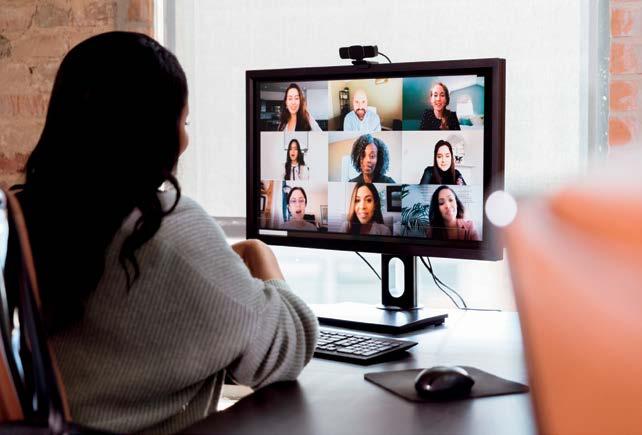
DEI comprises closely aligned values that acknowledge the world of work has become exceptionally varied: more genders, different races, ethnicities, religions, abilities and sexual orientations. DEI is typified or represented by organisations doing their best to support all these differences. Indeed, HRNZ offers resources on DEI
I have been surveying the New Zealand workforce at least twice a year since 2020 (roughly 1,000 employees per survey). My opinion represents interpreting the data, not my personal experiences. Overall, in answer to my title question, the data suggests Aotearoa New Zealand employers are not doing a great job of DEI. It is indeed more on ‘life support’ than ‘thriving’.
Recognising the good
First off, some employers are doing great! DEI is probably very well managed and supported across a quarter of employers in
Aotearoa New Zealand, and they are probably struggling with challenges, too. DEI is complex. Employees are complex, and, yes, COVID-19 has made the whole world of work more complex and challenging. But are we really that bad?
perceived discrimination at work with a large group of Māori and Pacific employees (585 respondents). Perceived discrimination relates to an employee’s perception of being treated differently because of being an outsider (eg, ethnicity, religion). Importantly, Māori and Pacific employees who reported greater perceived discrimination were more likely to suffer poorer mental health, higher job stress, and anxiety and depression related to their job. It also reduced their job satisfaction and engagement; two critical factors with strong links to job performance and retention. Want a better performing and healthier workforce of minority workers? Then ensure that DEI is working!
What would thriving look like? Well, all employees – irrespective of gender, ethnicity, religion, sexual orientation and abilities – feel genuinely supported and able to bring their genuine selves to work. That is what inclusion is all about. It’s about feeling like you belong in the workplace while being able to bring your unique characteristics with you: whether cultural (acknowledging te ao Māori or the Māori worldview) or through the use of pronouns or simply not being discriminated against because of your gender, ethnicity or religion.
What research tells us
But the evidence is not good. I recently published a study (from one of these surveys) on the
The analysis also showed only 6.4 per cent of Māori employees and 4.1 per cent of Pacific employees reported no discrimination whatsoever. Given such a high rate of discrimination, I am struggling to see where good DEI is in these workers’ experiences. Overall, the data shows widespread discrimination towards Māori and Pacific employees. The one silver lining with an overall low mean score though, is it means the experiences are widely shared, but, thankfully, not too many workers experience discrimination too frequently. The analysis of discrimination towards outcomes, however, shows this doesn’t matter, it strongly affects their wellbeing and how they feel about work.
One caveat you might be thinking of is that this is a one-off experience.
“ Māori and Pacific employees who reported greater perceived discrimination were more likely to suffer poorer mental health, higher job stress, and anxiety and depression related to their job.”
DIVERSITY, EQUITY AND INCLUSION JARROD HAAR SHAPES 28 HUMAN RESOURCES | WINTER 2023
Alas no. Beyond more data showing similar effects, a past master’s student of mine did a study of perceived discrimination in the workforce focusing on Muslims, which included a range of ethnicities, including Pākehā. The effects were strikingly similar, including 4.1 per cent of Muslim respondents reporting no discrimination at all. Again, discrimination experiences were wide but (thankfully) not too deep on average. Again, these experiences reduced job satisfaction and commitment, and increased turnover intentions. Similarly, these experiences are linked to poor wellbeing.
Lessons to learn
Combined, what do these experiences tell us? Being different – your ethnicity and your religion –appears to lead to strong detrimental reactions in the workplace. For Māori and Pacific employees, the most common discrimination actions are ‘people making jokes or negative commentaries about people of my

ethnic background’. But that group and the Muslim study showed the other common forms of discrimination were ‘being pressured to assimilate’ and ‘having stereotypes about my culture/ ethnic group/religion and being treated like they were true’. All these types of behaviour and experiences illustrate no inclusion. You do not belong, and your uniqueness is an impediment. You need to change to belong (the assimilation comments). These are critical issues that need improving.
“ Want a better performing and healthier workforce of minority workers? Then ensure that DEI is working!”
Stats NZ forecasts that the population of New Zealand will grow and change, with fewer Pākehā (New Zealand Europeans) and more minorities, especially Māori, Pacific peoples and Asian. Thus, the groups that appear to be suffering in New Zealand workplace experiences
around discrimination are going to be more dominant and more important as the workforce of the future.

Does DEI have any place here?

Clearly, DEI is not only needed but vital. This data suggests, however, that the workplace experiences of the people that DEI is supposed to support and address are not being done adequately. The evidence does show that organisations and supervisors who are supportive of these minority employees do buffer the detrimental influences of discrimination on outcomes.
But we need to be doing more and a lot better, if we are to have a genuine thriving DEI culture in Aotearoa New Zealand. Despite my suggestion earlier that a quarter of businesses might be doing a good and supportive job around DEI, note the frequency of discrimination experiences. Roughly 95 per cent of these workers have experienced this in the past month. Where are the top DEI organisations? The reality is they are there, but it’s their workforce – and likely customers too
DIVERSITY, EQUITY, WHERE TO FROM HERE? VIRTUAL & INCLUSION THURSDAY 20 July, 2023 8:45AM - 2:00PM via Zoom - online
WINTER 2023 | HUMAN RESOURCES 29
– that are the root cause. This leads us to the implications of this all.
making them understand that identifying someone as different and, thus, not belonging in the workplace, is the antithesis of inclusion.”
HR’s role
Understanding workers’ discrimination experiences is essential. Beyond requirements for safe workplaces and being Tiriti o Waitangi (Treaty of Waitangi) partners, organisations are critical to enacting genuine inclusion. This data suggests there is a long way to go.
HR needs to take stock of the workplace experiences around discrimination. This includes discrimination not only by ethnicity and religion but by gender. I suspect sexual harassment experiences are

likely to be similar to those found around ethnicity and religion. HR teams are encouraged to get baseline data from within their organisations of these experiences and then work with leaders – perhaps through KPI targets – to encourage safer places to work for all.
“ Being different – your ethnicity and your religion – appears to lead to strong detrimental reactions in the workplace.”
HR can also look to highperformance HR practices that might include training and development opportunities for managers and employees around understanding DEI and the importance of discrimination-free workplaces. We need to change workers’ attitudes of ‘we’re only having a laugh’ by making them understand that identifying someone as different and, thus, not belonging in the workplace, is the antithesis of inclusion.
The research shows organisations and leaders play a crucial role here. Calling out inappropriate behaviour and encouraging a climate where workers can share experiences around discrimination are likely to be significant. Does HR need to discipline every occurrence? Likely not, but reiterating the importance of genuine DEI and supporting all workers are vital, as is recognising that those employees working against DEI are working against the organisation and its performance. For those individuals who do not respond and modify their behaviour, HR does need to be proactive and discipline such behaviour. It not only supports those workers being discriminated against, and their wellbeing, but creates a genuine climate of inclusion.
Remember, high-inclusion climates will benefit all workers, including Pākehā and males. Most workers want to work in a place where everyone gets along and everyone feels supported. Alas, Aotearoa New Zealand workplaces have a long way to go. Kia kaha!
Professor Jarrod Haar (PhD) is the Dean’s Chair and Professor of Management and Māori Business at Massey University and has tribal affiliations with Ngati Maniapoto and Ngati Mahuta. His research approach spans a broad range of management topics, with a strong focus on Human Resource Management and Organisational Behaviour. In particular:

(1) how employees manage their work, family and life roles such as work–life balance; (2) the role of cultural factors in the workplace (especially for Māori) and mātauranga Māori in business; (3) team functioning and its influence on team member wellbeing and job outcomes; (4) leadership and its influence on followers; and (5) innovation and entrepreneurship.
Domains of knowledge

“ We need to change workers’ attitudes of ‘we’re only having a laugh’ by
30 HUMAN RESOURCES | WINTER 2023
31 October 2023, Cordis,
Auckland
STRONGER WORKPLACE. BETTER BUSINESS OUTCOMES.




Improve productivity and business performance through a healthy, engaged, inspired and invigorated workforce.

MENTION HRNZ FOR A 10% DISCOUNT! SIMPLY USE CODE HRNZ AT CHECKOUT
WWW.THINKTANKMEDIA.NET/CHW

WINTER 2023 | HUMAN RESOURCES 31
Callum McKirdy
Dr Natalie Flynn
David Knoff
Amanda Wallace James Laughlin
Dr Denise Quinlan
Trust, misinformation and your organisation

Sarah Baddeley, Partner at management consultancy MartinJenkins outlines what HR professionals need to be considering in their own organisations when dealing with society’s increasing lack of faith in societal institutions.
Social leadership is now a core function of business. That’s the challenge thrown out to all organisations in the most recent annual Edelman Trust Barometer, an online survey that gains insights across more than 28 countries and over 36,000 respondents. This survey is a must-read for anyone helping their organisation navigate its role and relationship to its employees, customers and community.
Edelman argues that the evidence is in and that business is the ‘last one standing’ when it comes to trust in institutions and in the information they produce or relay (My employer: The last one standing, 1 September 2022). The COVID-19 pandemic has seen levels of trust in government, media and scientists fall to an alltime low.
EMPLOYEE ENGAGEMENT AND EXPERIENCE SARAH BADDELEY GOVERNS
32 HUMAN RESOURCES | WINTER 2023
CYCLE OF DISTRUST THREATENS SOCIETAL STABILITY


Questions HR practitioners should be asking
In this new context, where society is looking more and more to business to understand and address our most complex social problems, HR needs to be asking fundamental questions, including the following.
• Do we have clear positions on social issues that matter to our employees, customers and community?
• Do our values and behaviours and our systems and processes align with and support our positions on those social issues?
• Are we acting with integrity, particularly on the big social issues when it matters?
Disinformation and social division
Addressing those questions necessarily involves engaging with the problem of misinformation and disinformation.
‘Misinformation’ is false information that may or may not have been created to deceive and cause harm to a person, organisation or community. ‘Disinformation’ is false information that was deliberately designed with the intent to deceive and cause harm.
The concepts of misinformation and disinformation are at the centre of the thinking around increasing social division; often characterised as ‘culture wars’.
The World Economic Forum has identified societal division and loss of social cohesion as one of the top risks for the global economy. The Edelman team locate both division and disinformation in an alarming picture of the cycle of distrust that threatens social stability.
Drivers of misinformation
Kate Hannah and the Disinformation Project are studying misinformation and disinformation in New Zealand, including the impact of isolation, uncertainty, anxiety and fear. This project team has been observing the effects of disinformation and misinformation in Aotearoa since February 2020 and offers valuable insights into how misinformation and
disinformation operate and how they present critical challenges to New Zealand.
In his provocatively titled 2017 book How Bullshit Conquered the World, James Ball unpicked the tangled sources of misinformation by exploring the underpinning psychology, cognitive biases, profit structures and incentives and culture. Ball concludes that misinformation is a symptom, fuelled by misogyny, racism, nationalism, hyper-partisanship, distrust of government and anti-intellectualism.
Those drivers identified by Ball and the Disinformation Project are all contradictory to the goals of good human resource practice, particularly goals relating to diversity and inclusion.
Engaging with hearts and minds: A relational approach to building trust and countering misinformation
HR professionals grappled with the rise of misinformation and disinformation throughout the COVID-19 pandemic, particularly those whose workforces were subject to mandatory vaccination and other even more stringent requirements.
At MartinJenkins, we were involved with those challenges on several different fronts. At the height of the pandemic, we had staff who were part of the government response, while at the same time we were
SOCIETAL INSTABILITY M E D I A GO VE RN M E N T BU S I N ESS N GO s Climate change Job loss Discrimination Income inequality
Government and media feed cycle of division and disinformation for votes and clicks
NGOs and business pressured to take on societal problems beyond their abilities
“ The World Economic Forum has identified societal division and loss of social cohesion as one of the top risks for the global economy.”
WINTER 2023 | HUMAN RESOURCES 33
Edelman Trust Barometer 2022
Questions HR practitioners should be asking
So, engaging hearts and minds requires us to look closely at how our organisation is seen and how we are communicating.
• Do we understand how our employees, customers and communities access information about us?

• How much trust and confidence do they have in us and in what we say?
• What mechanisms are we using to engage with them?
• How can we work with social partners, suppliers, customers and those outside our organisation to have a clear understanding of what is important to us?
operating our own company and supporting our employees in a highly uncertain context.
I talk often about this experience with my colleague Paul Giles, our Engagement Lead at MartinJenkins. During much of the pandemic, Paul was Group Manager Communication and Engagement at the Ministry of Health. A seasoned engagement and communications leader, Paul believes that misinformation can’t be countered solely with evidence and accuracy, it also requires engaging with hearts and minds.
In other words, how we communicate and the mechanisms we use to build a sense of trust are as important as what we communicate.
As Paul puts it, “As leaders we need to move from transactional to relational models of communication. It’s about who is leading and communicating and about how our systems, processes, and other elements support our values in the workplace.”
34 HUMAN RESOURCES | WINTER 2023
Communication and misinformation in the workplace: Navigating rights and protections

Anyone who has sought to address bullying, racism or sexual harassment in the workplace knows it depends very much on the specifics and that it can involve a careful balancing act.
On the one hand, those behaviours can present risks under the Human Rights Act 1993, the Employment Relations Act 2000 or the Health and Safety at Work Act 2015. But balanced against that is the right under the Bill of Rights to seek, receive and impart information or opinions of any kind and in any form.
Those two considerations sit in obvious tension, and the tension has been making its way into our workplaces.
The resignation of Jacinda Ardern in January was a recent example of where employers found themselves having to make delicate balancing judgements. What was inherently a political event quickly morphed online into a strong misogynistic narrative.
Paul Giles and I were both surprised at how many people decided it was appropriate to share their personal opinions (including those that were inflammatory, derogatory and misogynistic) on Ardern through LinkedIn, a widely used platform for business networking where individuals’ reputations are directly connected to their employers.
For us, the episode reinforced how important it is for organisations to be clear about their positions on social issues and what they expect of their staff.
Questions HR professionals should be asking

• Do our employees clearly understand the position the organisation has taken on social issues?
• Do we have good policies that clearly set out our expectations of our employees’ conduct?
• Do we have good processes and systems in place to address poor behaviour and to prevent our organisation from getting a reputation for poor behaviour?
• Do we have relationships with people we can call on for help, particularly a good employment lawyer or other professionals who can independently review an employee’s conduct when needed?
• Have we stress-tested our policies against real-life examples?
Misinformation and exclusion: Making the links
Amanda Millar, a highly experienced journalist now with her own communications company, wrote an excellent opinion piece in March this year for Global Women on the consequences of online misogyny for democratic processes and for building diversity and inclusion. She wrote of the chilling effect it can have both on people feeling able to speak out and on women stepping into leadership roles.
Organisations will need to continue to grapple with the close links between, on the one hand, the flows of information and misinformation and, on the other, our efforts to advance diversity and inclusion, both inside our organisations and outside. HR practitioners need to continue to look carefully at what their organisation is saying: how and where. This may also include engaging with what your employees may be saying publicly, and the messages they may be sending about your organisation to the rest of your staff, customers and community.
Paul Giles (Ngāti Kahungunu) is Engagement Lead for MartinJenkins. He is evangelical about helping organisations tell their story in everything they do and about using insights to help organisations better understand their employees and customers.
Sarah Baddeley is a Partner of management consultancy MartinJenkins. She advises government, boards and executive teams on issues relating to employment, the labour market and organisational strategy.

“ …how we communicate and the mechanisms we use to build a sense of trust are as important as what we communicate.”
WINTER 2023 | HUMAN RESOURCES 35
Domains of knowledge
Including nonnative speakers
Kathy Catton spoke with Emma McAllister and Lua Leite from Education Perfect, the teaching and learning platform for primary and secondary schools, on how the organisation is making a difference for non-nativespeaking team members.
Education Perfect is in the business of helping others understand. Its core business is about empowering educators with the time, insight and resources they need to help learners reach their full potential. It covers subjects for all school children using worldclass technology. So, by making a difference in education, the 260-employee-strong company is now turning its attention to helping its staff feel engaged and become passionate learners.
English as an additional language
With 22 per cent of EPeeps (Education Perfect team members) identified as non-native English speakers, the organisation’s Diversity Equity and Inclusion (DEI) committee decided to introduce an initiative to support this cohort. These workers were finding it challenging to keep up when English was spoken quickly, or lacked confidence when speaking in larger groups.
As Emma McAllister, Chief Operating Officer, explains, the DEI committee had set the foundational goals for the organisation, and then allowed the individuals to propose initiatives that would have the most significant impact.
“This wasn’t a leadership directive,” Emma says. “We wanted to support this initiative and the people leading it, as it was a significant issue for them.”
Lua Leite worked with colleague Mônica Munakata to incorporate
more inclusive practices and build a support network for affected team members.
“I have English as a second language, and I would talk with my colleagues about how difficult it was to understand the business jargon used or just when people spoke quickly,” says Lua. “When we started to talk with more colleagues, we realised that everyone was having similar challenges, so we decided to do something about it.”
“ The DEI committee set the foundational goals for the organisation, and then allowed the individuals to propose initiatives that would have the most significant impact.”
Address the challenge
The first step was to communicate that this was an area of focus for the business and put out a call asking non-native English speakers to identify challenges and critical areas for improvement.
Areas highlighted included public speaking and keeping up in meetings, difficulty understanding the nuances of English grammar and spelling, lack of English fluency, extra time spent unpacking business jargon from presentations or written updates, and lack of confidence contributing to meetings.
DIVERSITY AND INCLUSION KATHY CATTON LEADS
36 HUMAN RESOURCES | WINTER 2023
“After compiling all the ideas, we decided on a range of initiatives to implement,” says Lua.
One of the initiatives was producing a mini-series featuring people with English as an additional language. “We videoed people speaking in their own language, letting people know how they could help them to understand more.”
These video clips were then given subtitles and distributed via the company’s Slack channel.
“By speaking in their native language, they could really express how they felt,” says Lua. “They didn’t have any language barriers, so they could express themselves easily and freely.”
The videos were a huge success and opened the door to further conversations among employees and managers alike.
“ Live transcription is enabled for other core meetings.”
Lua, whose native language is Portuguese, likes how the videos have started to bring a cultural richness to the team. “One of my colleagues is from China, and he was explaining that the way he interprets numbers is completely different to mine, so now I can work better with him as I understand our differences.”
Parts of the whole
To help non-native English speakers interpret what’s said in online meetings, live transcription has been enabled. Monthly All Staff meetings are also recorded and then hosted internally alongside a written transcript. Live transcription is enabled for other core meetings, and information on how to implement the feature has been distributed to Zoom account owners for use with their teams.
Education Perfect has made Grammarly Premium subscriptions available to all non-native English speakers. This enables these team members to double-check any grammar and spelling quickly.
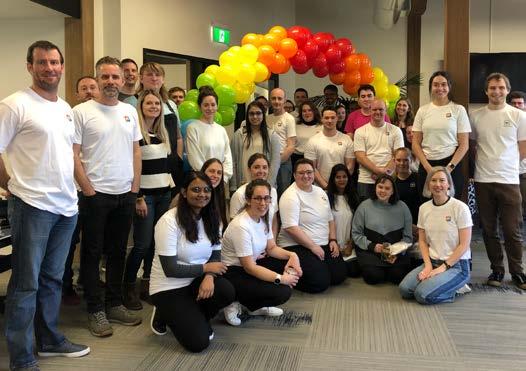
WINTER 2023 | HUMAN RESOURCES 37
The team is continuously developing an acronym and jargon bank to act as a guide for EPeeps when they’re confronted with language they don’t fully understand.
In addition, a public speaking workshop specifically designed for the non-native English speakers at Education Perfect has been designed, focusing on language structure, strategies to overcome lack of confidence and techniques to engage the audience.
Results
When surveyed in the annual engagement survey and asked whether people felt their diversity was respected, the percentage rose from 74 per cent in 2021 to 84 per cent a year after these initiatives had been introduced. Of English as an Additional Language team members, 83 per cent felt more comfortable communicating, 57 per cent felt more included, and 91 per cent felt that their managers cared about and supported their needs.
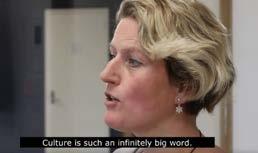
The DEI committee continues to promote cultural diversity within the organisation by improving the initiatives already in place. “We’re currently setting up monthly cultural lunches where everyone can bring food from their country and we share recipes,” says Lua. “People connect
through food, so we hope this will be successful.”
Emma explains that the recruitment and selection process is also evolving to include this cultural diversity. The mini-series videos are now being shown during onboarding, and a cultural buddy system has been set up. “We’re translating the miniseries so that people understand that we are an inclusive culture and respectful of other people, including those who don’t have English as their first language.”

Advice for others
Emma and Lua both agree that an initiative like this would be great for any organisation, given the wave of migration we are experiencing.
“I think it’s essential for every company to look at what they’re doing to include people,” says Lua. “It’s important for people to talk and listen to what people have to say.”

Lua advises people to be openminded and to ask others for ideas, rather than feeling like they need to come up with all the initiatives themselves. Emma also emphasises the need to be quite specific. “We initially started working on lots of different initiatives with a wide area of focus. By starting with the parameters of the DEI committee, you can then set the goals but look
to where people want to take it,” says Emma. So, more buy-in can be achieved, leading to greater team productivity and performance. Education Perfect was the recipient of this year’s HRNZ Diversity Award. Congratulations to Education Perfect on its success in bringing people together and enhancing both employee engagement and team performance.
“ The team is continuously developing an acronym and jargon bank to act as a guide for EPeeps when they’re confronted with language they don’t fully understand.”
Domains of knowledge
38 HUMAN RESOURCES | WINTER 2023







Book an Injury Management appointment to have your plan assessed in just a few easy steps. CareHQ is a partnership between Southern Cross Health Society and ProCare. Return-to-work assessments sometimes require in-person review, so your CareHQ GP may refer on to allied health professionals, specialist providers, and where indicated the enrolled GP clinic for continuity of care and safety. STEP 1 Open the CareHQ App or book online at carehq.co.nz STEP 2 Book an Injury Management appointment STEP 3 Upload your return to work assessment STEP 4 Enter your coupon code or credit card STEP 5 Open the consult link on a PC, phone or tablet What kind of booking would you like to make today? My appointments FAQs Welcome to CareHQ Book a GP After hours Injury management International visitor Check our calendar for available appointments 7am – 7pm Book a GP from 7pm – 9pm Book a return-to-work assessment using your business’s coupon code Book a GP here for international students, visitors and non-residents With the convenience of an online GP consultation, 7am – 7pm, 365 days a year, CareHQ’s Injury Management clinic is the easy way to support your employees and help manage Lost Time Injury. To find out more or to book a consult visit carehq.co.nz Get your return-to-work plan assessed with ease Please note: CareHQ is not meant to replace a patient / employee’s usual care with their usual GP.
Dear Human Resources

One of the challenges I see at play in senior leadership roles is trying to find the perfect blend between creating a safe, empathetic, nurturing team environment and an expectation for high performance and execution.
Let me explain. I’ve experienced teams that are high on the softer skills: highly empathetic and caring. People love working there. Yet execution lags and poor performers linger.
I’ve also experienced teams that churn out execution, but people are afraid to speak up, engagement is poor (or worse, artificially high), and people eventually burn out. It’s the team that only the driven want to work in, for a while, anyway. Both scenarios are more common than we’d like to admit.
In our team, we talk a lot about ‘high performance through high trust’, and, for me, the foundation of that is psychological safety grounded in inclusiveness and acceptance. Sounds like a mouthful, but what if the pursuit of ideals such as true diversity and high performance is best found in the pursuit of inclusiveness and acceptance? What
if, by breaking down the barriers for people to be themselves and operate in their uniqueness, we foster the environment necessary for people to be their most creative and industrious? And maybe then that also creates the right environment to have tougher conversations when execution doesn’t quite meet expectations.
If you’ve got kids (mine are aged 16 and 12), you might see this in practice sometimes. When our kids feel safe, if they know love and acceptance are unconditional (in practice, not just words), they’ll try new things and respond to feedback well. But if they don’t, survival mode kicks in, and you’ll get minimum viable response. Or worse. How often do we see this in our teams?
I’ve seen this play out in another way, too. I met a young boy aged 18-months who came from an orphanage overseas. I had the privilege of observing him as he grew up, adopted by a loving family in Aotearoa. It took years to unwind the institutionalised reactions of a young boy in survival mode through repetitive demonstrations of love, acceptance and behaviour that created healthy connection. But at the end of the process (spoiler alert, it never really ends), you have a child willing to give things a go, embrace a new life and new experiences, and be corrected when they stuff up. Yet, sometimes I think we expect all these things won’t be true of the teams and people we lead.
So, my ask of the Department of Resources for Humans (aka HR) is please help me find the best resources to foster inclusiveness, acceptance and psychological safety. Topics like vulnerability, empathy, telling my truth (and accepting yours), understanding different styles and cultures, setting high standards, embracing authenticity, and creating a culture of accountability are probably going to be on the list. But I’m sure you’ve got more to help us reap the benefits of true diversity, where everybody (anybody) in a team feels confident to be their best.
Mike Davy is MAS’s Chief Member Advocacy Officer and has been on the Executive Team for the past eight years. He believes that when people can bring all of themselves into their work and connect with passion and purpose, they’ll achieve great things.

Our regular columnist, Mike Davy, Chief Member Advocacy Officer at MAS, shares his heartfelt insights into leading people.
DEAR HUMAN RESOURCES MIKE DAVY LEADS
Domains of knowledge 40 HUMAN RESOURCES | WINTER 2023
Gain Recognition as
a Leading HR Professional
HRNZ is committed to promoting the highest levels of professionalism in Human Resources practice, through professional accreditation.
Benefits of Professional Accreditation
• Professional accreditation demonstrates your commitment to professional, ethical practice. It positions you as a leading HR Professional. It is an ideal way to showcase professional achievements and career-long development.
• HRNZ supports HR Professionals in New Zealand to achieve recognised standards of excellence and competence in HR practice through accreditation.
• Support your HR team members to develop their capabilities and achieve a portable and nationally recognised standard of competence in HR.
Which accreditation is right for you
Early career HR professionals - HRNZ’s new Emerging Professional Member accreditation - is the ideal accreditation for you right now. It signals to employers and your colleagues that you are committed to pursuing HR as a career. For more information and how to apply, please visit hrnz.org.nz/emerging

Experienced HR professionals - gain the recognition you deserve for your competency and professionalism with Chartered Membership accreditation. Chartered Members are champions of the HR profession in New Zealand. Download the Chartered Membership information booklet and for more information please visit hrnz.org.nz/getchartered.
Recently Accredited Members
Chartered Members 2021
Emerging Professional Members 2023 Claudia Serra EPMHRNZ 22 May Chantelle Howes EPMHRNZ 12 May Vincent Walsh EPMHRNZ 18 April Sophie Carter EPMHRNZ 14 April Angela Carter EPMHRNZ 14 April Kerri Neil EPMHRNZ 30 March Kate Wallwork EPMHRNZ 27 March Thao Vo EPMHRNZ 7 March
David Cotter CMHRNZ 19 May Christin Ritchie CMHRNZ 19 May Jenifer Broster CMHRNZ 8 May Melissa Crawford CMHRNZ 1 May Natasha Holloway CMHRNZ 19 April Jocelyn Visser CMHRNZ 27 March Nga Nguyen CMHRNZ 13 March Christine Scott CMHRNZ 13 March
Domains of Knowledge
HR Administration
Policy and Process Design
Diversity, Equity and Inclusion
Analytics and Data Science
Attraction, Recruitment and Selection
Employment Relations

Industrial Relations
Change Management
Health, Safety and Wellbeing
Renumeration and Rewards
Learning and Development
Employee Engagement and Experience
Workforce Planning
HR Systems and Technology
Payroll Management
Leading the HR function
Organisational Development


























 Sianatu
Sianatu
























































